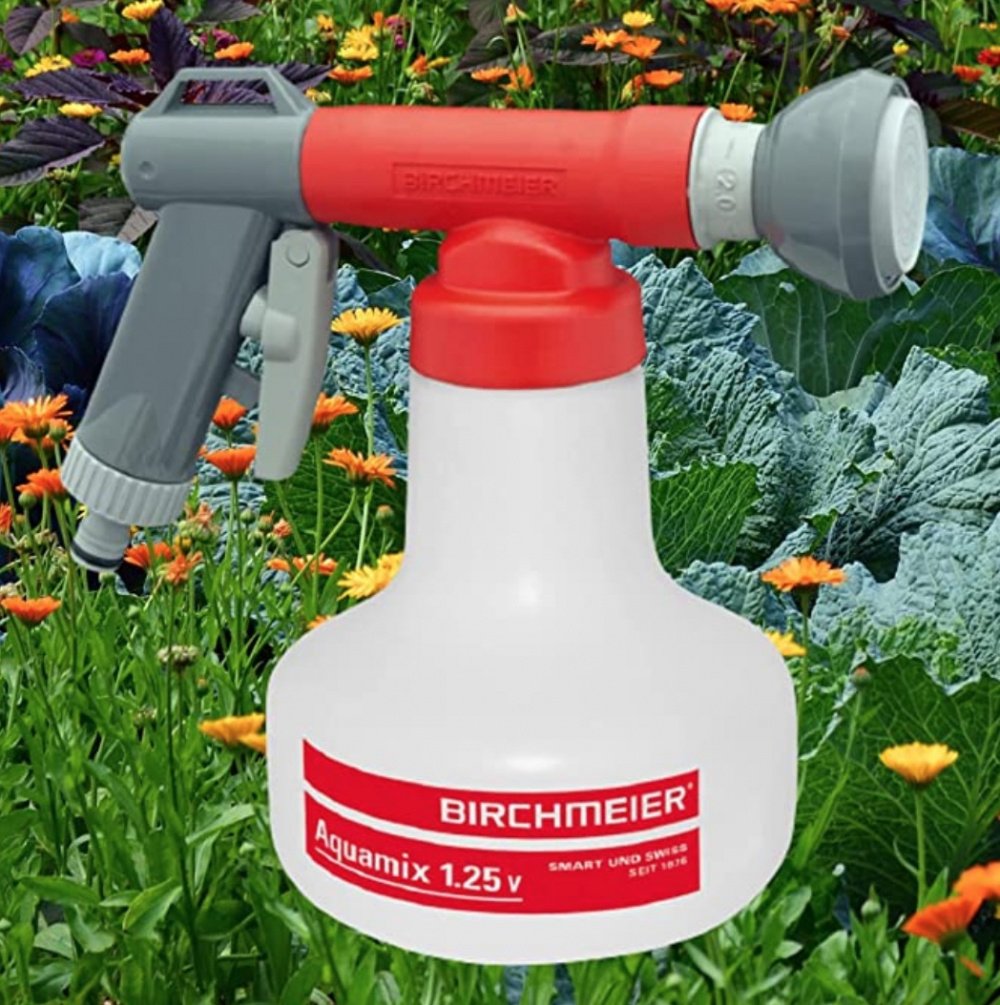This Forum will close on Wednesday 27 March, 2024. Please refer to the announcement on the Discussions page for further detail.
Has anyone used one of these?
I got this for two reasons:
- I'm sick of running backwards and forwards with multiple watering cans to feed my long borders and raised beds.
- It got excellent reviews.
Only problem is the instructions are really vague and not much info on how to figure which number on the dial you need to use, am assuming it depends on the strength of the liquid feed but I still can't work it out. There are a choice of numbers on the nozzle starting with 0.2%, 0.5%, 1% and 2%.
One of the reviewers said she actually dissolved a powder feed (miracle grow) and decanted it to remove any residual bits but I think everyone else used liquid such as seaweed and something called 'C4' and 'PK' - not sure what the last two are though.
If anyone can give me any pointers on which number to choose and how much liquid to put in I would be really grateful (maths was never my strongest subject) 

0
Posts
0.5% would be equivalent to 1 teaspoon (or 5ml) per litre
1.0% would be equivalent to 2 teaspoons (or 10ml) per litre
2.0% would be equivalent to 4 teaspoons (or 20ml) per litre
Most fertilizers are diluted at the rate of 5ml/litre
I don't know what C4 or PK is I'm afraid
Billericay - Essex
Knowledge is knowing that a tomato is a fruit.
Wisdom is not putting it in a fruit salad.
Rose, clematis and tomato feeds are available and tomato does for most flowering plants but try and avoid things like Growmore which come from oil refining. Pelleted chicken manure is good for generally health and leafy plants.
Blood, fish and bone is also a good organic (as opposed to chemical) fertiliser if you don't have foxes. It can be found in its separate components too:
Bonemeal/phosphorus is great for producing strong roots as well as flower and fruit development.
Potassium/blood promotes strong stems which help with osmosis and also fruits and flowers.
The fish content provides nitrogen which you can also get from nettle tea.
It's always better to feed the soil than feed plants so, when everything goes dormant in autumn a good mulch of well-rotted garden compost or manure will work wonders but buy your manure from a good source as some farmyard manures can be contaminated with aminopyralid which is an agricultural weed killer that will damage your treasures.
I’d agree with @Obelixx. Powder feeding.
there used to be a gardener on TV who said it’s a waste to put liquid feeble on garden plants, it washes through too quickly. Slow release Granule feed is better.
oh nooo - it wasn't cheap so am determined to use it. I've fitted it to my hose, ran water through and it works well though.